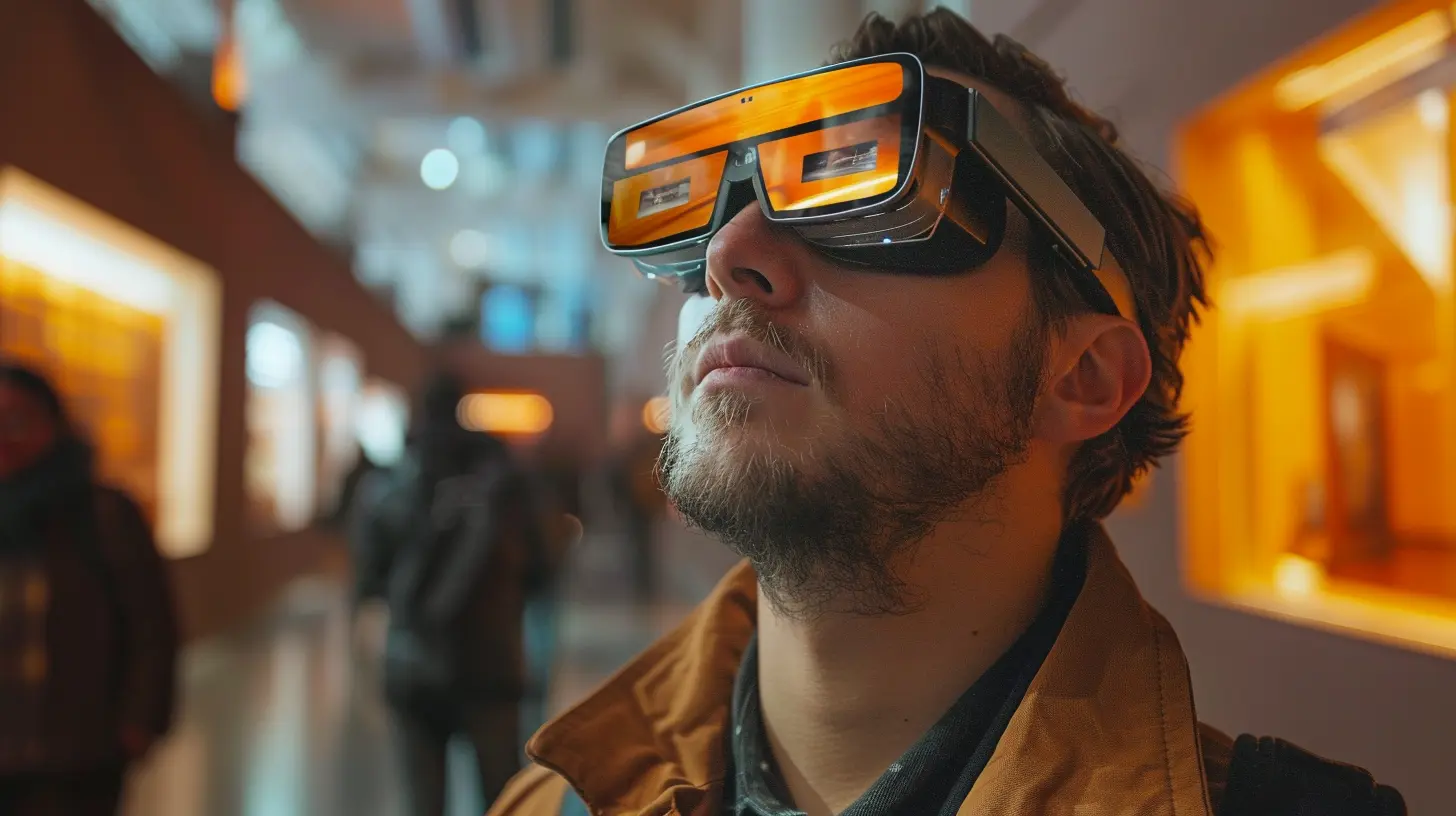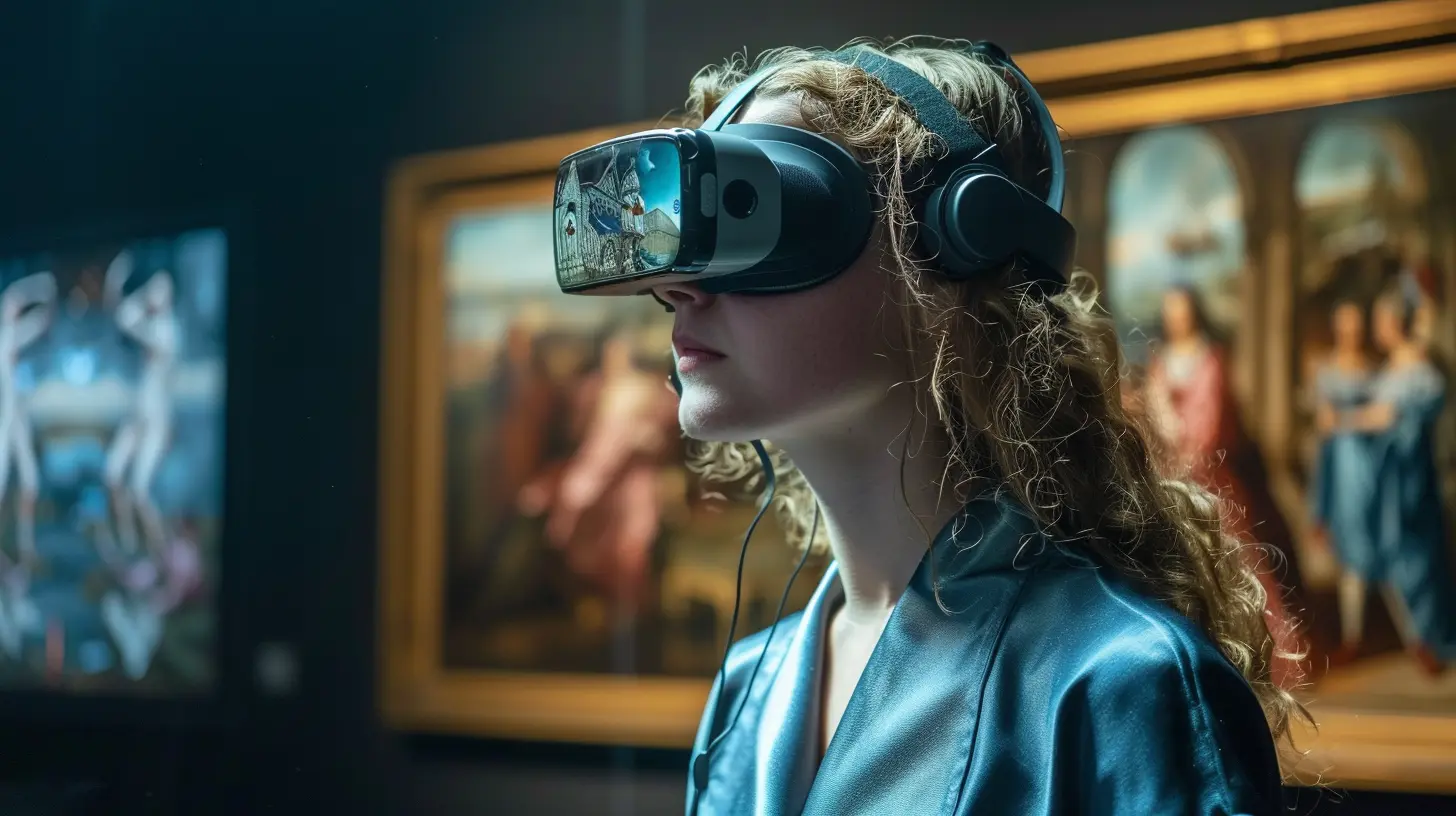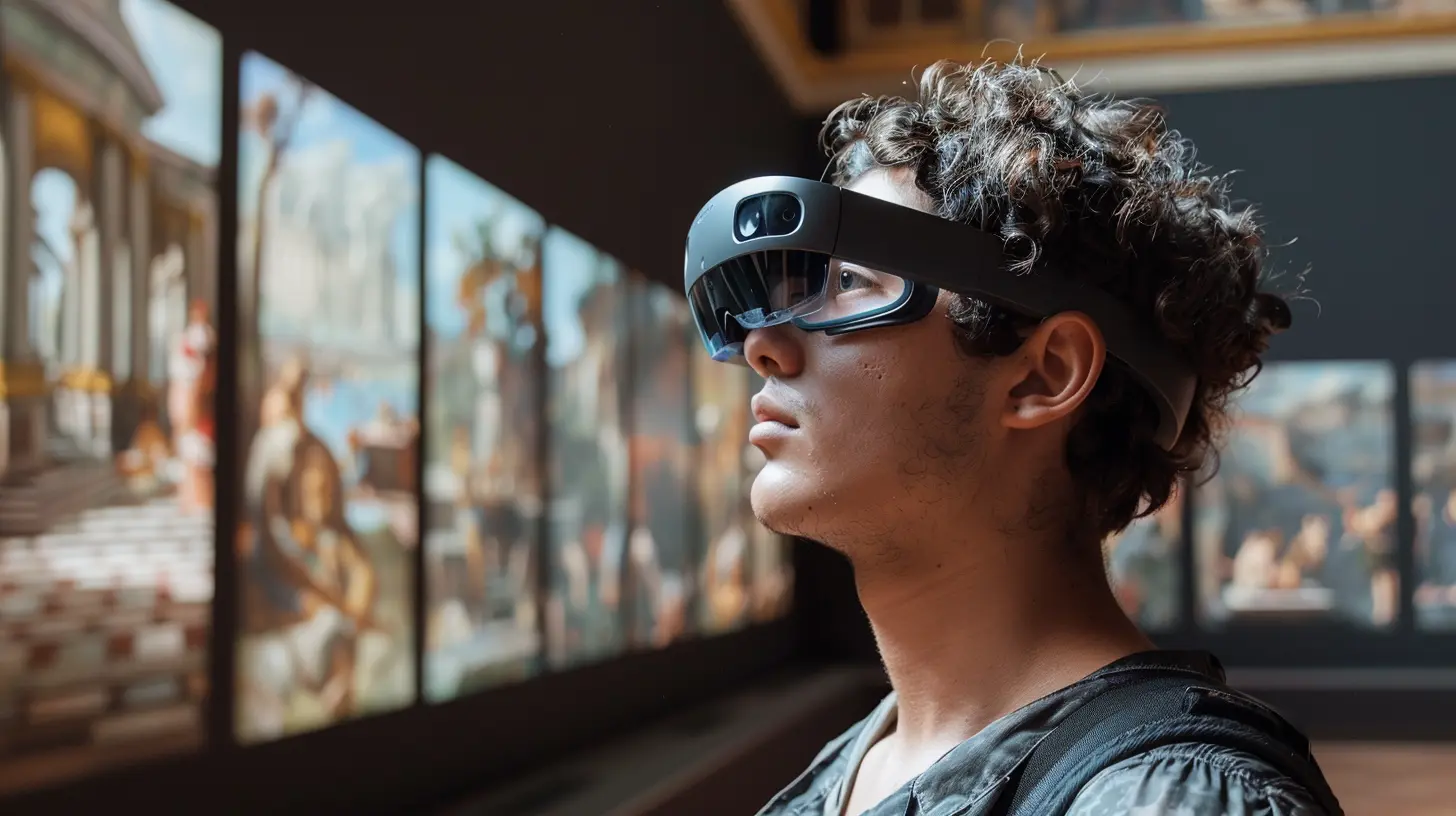The Role of AR Glasses in Enhancing Museum and Art Experiences
24 June 2025
Hey there! Have you ever walked through a museum and thought, “Wow, this is awesome, but I wish I could see what this used to look like hundreds of years ago”? Or maybe you’ve stared at a piece of abstract art for ten minutes straight, trying to figure out what it means — just wishing someone could whisper insights right into your ear. Well, welcome to the future. Augmented Reality (AR) glasses are about to flip the traditional museum and art world on its head — in the best way possible.
Let’s dive into how AR glasses are not just another tech gadget but a revolutionary tool that’s making museums more immersive, accessible, and downright magical.
What Are AR Glasses, Anyway?
First things first, let’s break it down. AR glasses are wearable devices that overlay digital content — images, animations, text, and even sounds — onto the real world. Think of them like your regular glasses, but way cooler. Instead of just correcting your vision, they enhance it by adding layers of information right in front of your eyes.Unlike Virtual Reality, which immerses you in a completely digital world, AR blends the physical and digital realms seamlessly. And when it comes to experiencing art and history, that combo is pure gold.
Museums: From Static to Interactive
Museums have always been about storytelling. Every painting, sculpture, and artifact holds stories that connect us to the past, to other cultures, and to human emotions. But let’s be honest — traditional displays and plaques, while informative, can feel a bit… one-dimensional.AR glasses change that whole game.
1. Bringing Artifacts to Life
Imagine standing in front of a centuries-old Greek statue. Now, pop on your AR glasses, and suddenly, you see the statue in its original form — colors restored, missing limbs reconstructed, and historical context appearing as floating annotations or narrated audio clips.It’s like time-traveling without leaving the exhibit.
2. Interactive Storytelling
AR glasses allow curators to craft deeply immersive narratives. So instead of just reading about ancient Egypt, you walk through a digital marketplace, hear the sounds, see animations of daily life, and feel part of the story. It’s history made vivid.
Making Art Understandable and Personal
Let’s be real — art can be intimidating. Not everyone is an art historian, and sometimes, a painting just looks like… paint on a canvas. Helpful as they are, placards often don't do justice to the artist’s intent or emotional context.1. Contextual Overlays
With AR glasses, when you look at that abstract piece, layers of context appear — who the artist was, what inspired the work, whispers of critique from famous historians, or even a comparison with similar art styles.It’s like having a personal art guide that knows exactly what you’re curious about.
2. Emotional Connection
By offering different modes of interpretation — voiceovers, holograms, animations — AR meets people where they are. Whether you're a child, a first-time visitor, or a seasoned art connoisseur, the experience becomes emotional, personal, and far more memorable.
A New Era of Accessibility
Museums have tried for years to be more inclusive and accessible, but it's a tough nut to crack. AR glasses are helping bridge that gap with some pretty incredible features.1. Real-Time Translations
Traveling abroad and worried you won’t understand the exhibits? AR glasses can translate plaques and audio guides into your preferred language in real time. Language barrier? Gone.2. Visual and Audio Enhancements
Visitors with visual impairments can receive high-contrast visuals, audio descriptions, or haptic feedback through AR integration. Those who are deaf or hard of hearing can see subtitles or even avatars using sign language.Inclusivity no longer feels like an afterthought. With AR, it’s baked into the experience.
Engaging Kids and the Next Generation
Let’s face it — convincing kids to go to a museum can be a hard sell. But throw in some high-tech glasses, interactive characters popping out of paintings, and gamified learning? Now you’ve got their attention.1. Gamification of Learning
AR turns learning into a treasure hunt. Kids can walk through exhibits collecting virtual artifacts, answering questions, and unlocking hidden easter eggs — all while absorbing knowledge in a hands-on way.2. Making History Cool
Imagine a kid seeing a medieval knight appear beside a suit of armor, challenging them to a virtual duel. It's not just fun; it’s an unforgettable history lesson.Empowering Curators and Artists
It’s not just about the visitors — AR opens up thrilling new possibilities for museum staff and artists, too.1. Dynamic Displays
With AR glasses, exhibits are no longer limited to physical installations. Curators can update digital layers with new research, add seasonal or event-based content, or even personalize experiences based on visitor preferences.2. New Medium for Artists
Artists are starting to create works specifically for augmented reality. Imagine sculptural pieces that come to life, or paintings that respond to your gaze. It's an entirely new canvas for artistic expression.Behind the Scenes: The Tech Making It All Happen
Alright, let’s get a bit geeky — in a fun way. What’s powering this marvel?1. Spatial Mapping and Object Recognition
Advanced sensors allow AR glasses to recognize where you are, what you’re looking at, and how to accurately place virtual elements in your field of view.2. Cloud Connectivity
Most AR experiences are supported by cloud-based content. That means museums can remotely update and enhance their digital layers without needing to overhaul physical components.3. AI-Powered Personalization
Some AR glasses use artificial intelligence to tailor experiences based on your interests. Are you into surrealist art? Expect more content about Dali and Magritte. Intrigued by war history? You’ll get deeper insights into battle artifacts.It’s like having a museum that adapts to YOU.
The Challenges That Still Need Tackling
We’d be lying if we said it’s all sunshine and rainbows. Like anything new and shiny, AR in museums comes with its own set of hurdles.1. Cost and Access
AR glasses aren’t exactly cheap, and outfitting entire museums with them requires serious investment. This means smaller institutions might be left behind unless solutions become more affordable.2. Tech Overload
While AR can enhance experiences, there’s always a risk of information overload. If not carefully designed, digital overlays can become distracting or even undermine the artwork they’re meant to support.3. Maintenance and Training
Let’s not forget — this is still tech. It needs updates, maintenance, and trained staff who can assist guests. Without proper infrastructure, even the coolest AR tech can fall flat.The Future Looks Bright (and Transparent)
Despite the obstacles, the momentum is strong. Museums around the world — from The Smithsonian to The Louvre — are experimenting with AR in thrilling ways. And as AR glasses become lighter, more affordable, and more powerful, their adoption will only accelerate.Imagine walking into a museum where every painting speaks to you, every sculpture moves, and every exhibit comes alive. Where your personal journey shapes what you see and learn. That’s not science fiction — it’s arriving faster than you think.
Final Thoughts: A Bridge Between The Past and Future
At their core, museums and art galleries are time machines. They connect us to distant worlds, ancient civilizations, and the depths of human creativity. But for too long, those connections have relied on text-heavy plaques and formal tours.AR glasses tear down that barrier. They make art accessible, history engaging, and learning intuitive. They don't replace the magic of seeing a masterpiece in person — they enhance it. It’s the same soul-stirring journey, just with a few extra sparks.
So, whether you’re an art lover, a curious traveler, or someone just looking for a more personal way to connect with culture, AR glasses could be your new best friend at the museum.
Bring on the future — it’s looking pretty artistic.
all images in this post were generated using AI tools
Category:
Ar GlassesAuthor:

Gabriel Sullivan
Discussion
rate this article
2 comments
Cecilia Sullivan
This article insightfully highlights the transformative potential of AR glasses in museums and art spaces. By merging digital content with physical exhibits, they create immersive experiences that enhance visitor engagement and understanding. Embracing this technology could revolutionize how we appreciate and interact with art and culture. Great read!
November 14, 2025 at 4:02 AM
Orionyx McIntosh
Great insights on AR glasses! They truly have the potential to revolutionize how we interact with art and history. Excited to see future innovations enhancing our cultural experiences even further!
June 30, 2025 at 4:07 AM

Gabriel Sullivan
Thank you for your enthusiasm! I'm glad you found the insights valuable. The potential of AR glasses to transform our interaction with art and history is indeed exciting!


